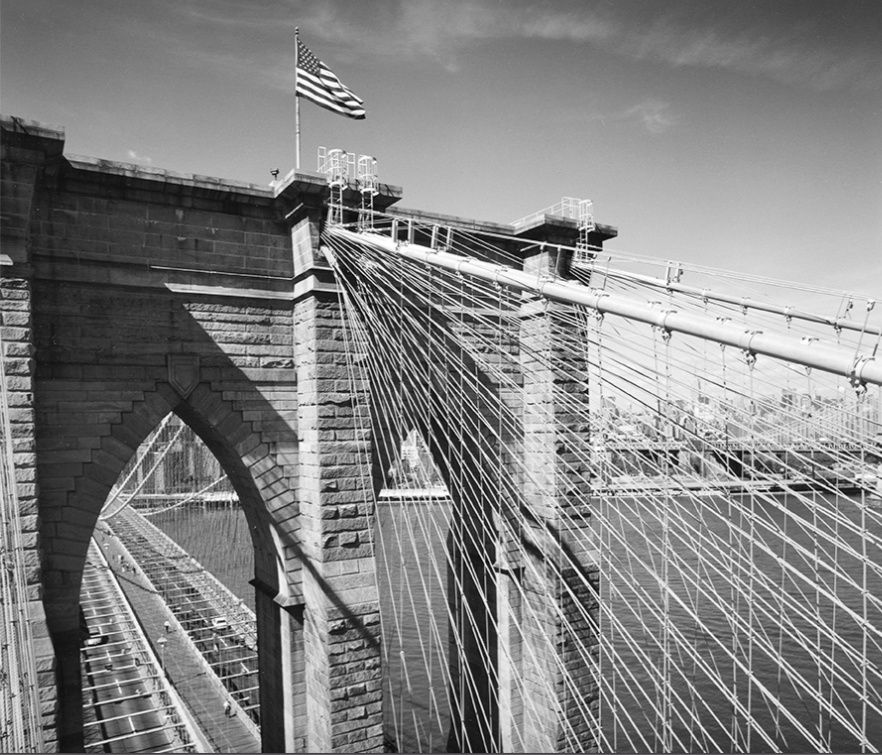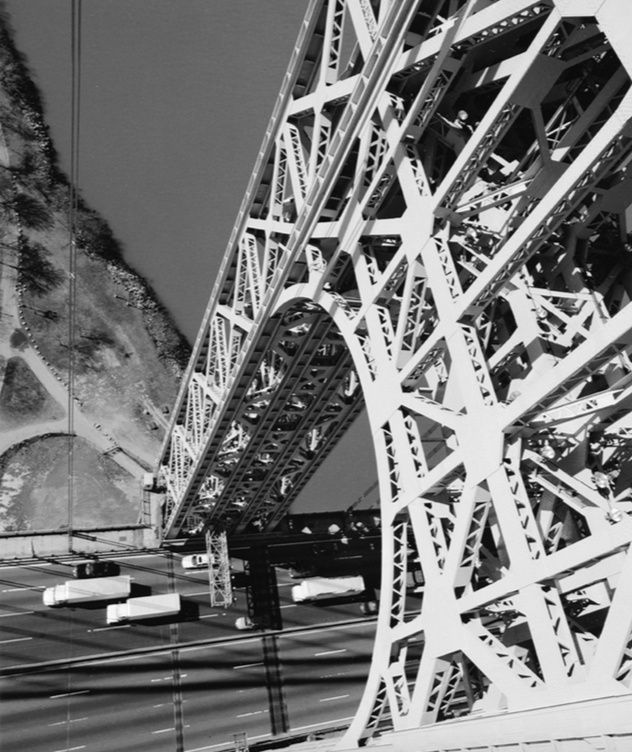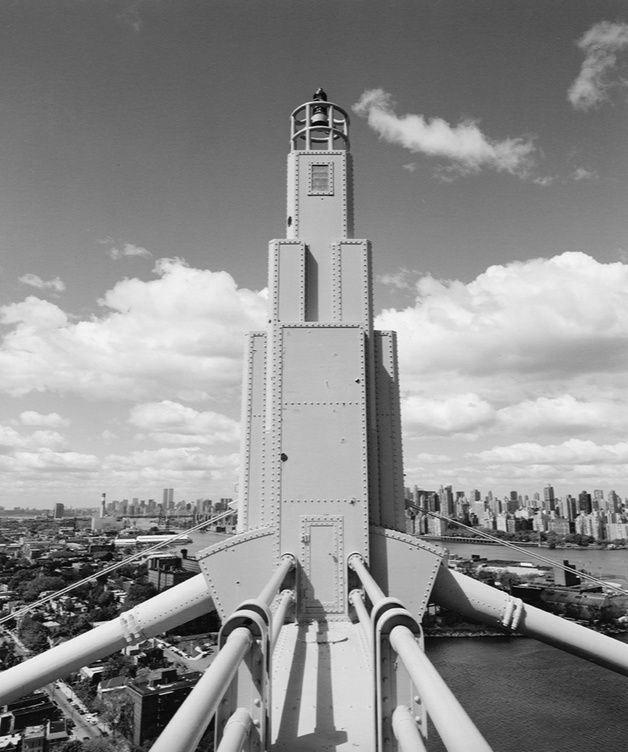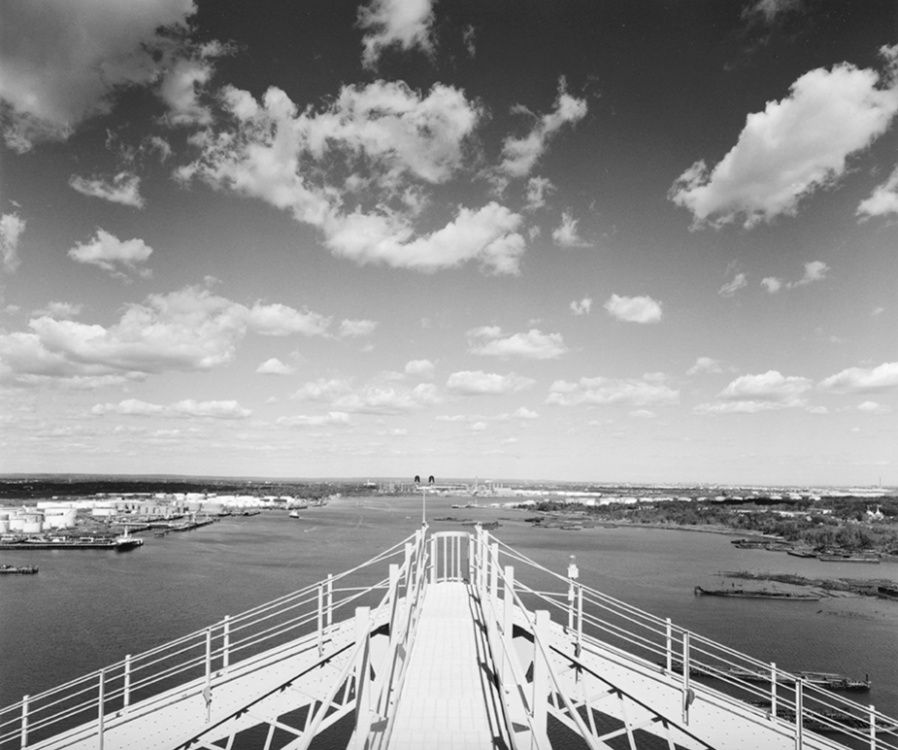Last-Minute NYC Holiday Gift Guide 🎁
We’ve created a holiday gift guide with presents for the intrepid New Yorker that should arrive just in time—


Six years ago, we walked along the George Washington Bridge with Dave Frieder, “The Bridge Man” of New York City. For more than a quarter of a century, Frieder, a native New Yorker, has been patiently documenting New York CIty’s bridges from foot-tingling perspectives up top. Inspired by the work of Ansel Adams and photographs from atop the Golden Gate Bridge by John Sexton, Adams’ assistant with whom Frieder studied with, Frieder has been taking his Hasselblad 2000 FCW camera up to the top of the city’s river crossings for decades.
For eight years, Frieder had uninterrupted access to the top of the city’s bridges, all the way up until 9/11. Frieder just needed to ask, provide proof of insurance, and confirm he was not afraid of heights. The only requirement he received back was that another guy would accompany him on the climbs, and he was given permission to photograph all the bridges by the various authorities. It was a different time, and he didn’t have to “deal with too many miles of red tape,” Freider writes in his gorgeous new book, The Magnificent Bridges of New York. Things changed drastically after 9/11, but even so, by 2015, he had completed all the photographs he needed to pursue his dream: to publish a coffee table book in black and white. He wanted the book to have “the look and feel of a book produced by Ansel Adams,” he told us.

Brooklyn Bridge. Photo copyright Dave Frieder from The Magnificent Bridges of New York
Four years later, the book, The Magnificent Bridges of New York, is ready and available on Amazon. He will also be giving a talk on the book on October 15th with the Greater Astoria Historical Society. The foreword of the book is written by James Starace, Chief Engineer of The Port Authority of New York and New Jersey, who states, “It is easy to take New York City’s bridges for granted. They are often seen merely as structures whose sole purpose is to get us from one place to another as part of our daily travels, while the details of their grandeur go unnoticed. Dave Frieder’s photographs bring New York City’s bridges to life by capturing the inherent beauty of these historic civil engineering landmarks.”

George Washington Bridge. Photo copyright Dave Frieder from The Magnificent Bridges of New York
In the introduction, Frieder writes that his fascination with heights started from when he was a child growing up in Queens. “I always loved to look down,” he says, and describes his early interactions with photography, from a Kodak Brownie camera to building his own darkroom at age twelve. He also describes the physical nature of the photography, crediting his background in gymnastics which he practiced for over twenty years. But the photography has always been in tandem with his deep interest in the bridges themselves — the engineering, the history, the pioneers who designed them, and the fun facts, which Frieder can rattle off.

Triborough Bridge. Photo copyright Dave Frieder from The Magnificent Bridges of New York
Freider is, in the end, still moved by the bridges he has made his sole subject for so many decades. His sense of amazement at New York City’s bridges continues, and he says,
“New York City is really a first when it comes to modern suspension bridges. The Brooklyn Bridge was the first to have galvanized steel wires for the construction of the main cables. The Williamsburgh was the first major all-steel suspension bridge with a main span of 1,600 feet; it was also the first major bridge to have a modern footbridge for the construction of the main cables. The Manhattan Bridge was truly the first modern suspension with a Warren-type stiffening truss; it was also the first to have flexible steel towers (cellular). The Queensboro was one of the largest double cantilever truss bridges at the time of its completion. The George Washington Bridge was the first large-scale suspension bridge with main cables 3 feet in diameter.
If not for the bridges of New York, California would not have its San Francisco-Oakland Bay Bridge and Golden Gate Bridge. Nor would Japan have the longest suspension bridge in the world, the Akashi Kaikyo Bridge, with a main span of 6,532 feet. No other city like New York has more diverse or historic and larger bridges. Because four of the five boroughs of New York are islands, bridges are a necessity, especially today.”

Outerbridge Crossing. Photo copyright Dave Frieder from The Magnificent Bridges of New York
The Magnificent Bridges of New York achieves what Frieder long ago set out to do. A beautiful, fine art book with photographs showing unprecedented access on New York City’s bridges — access impossible to get today — with detailed information about twenty of the city’s major crossings. The photographs also serve a documentation of places that have disappeared from the city — from the Twin Towers which appear in numerous photographs, to the hospitals that were demolished on Roosevelt Island, to whole bridges like the Goethals Bridge, which has been replaced in entirety.
Get the book The Magnificent Bridges of New York on Amazon!
Subscribe to our newsletter